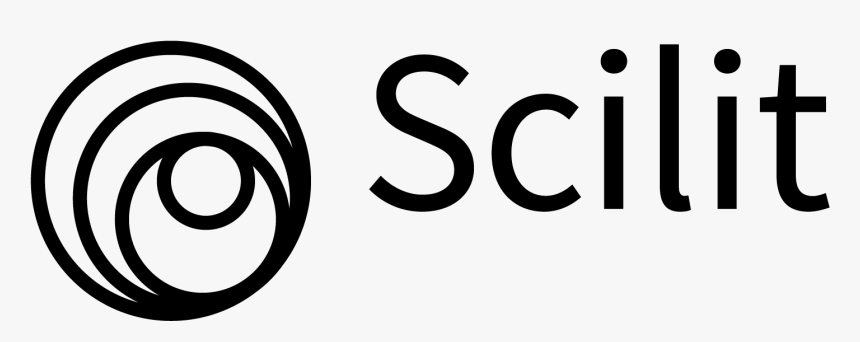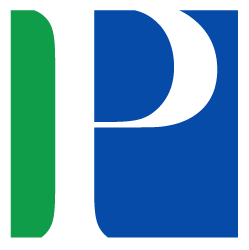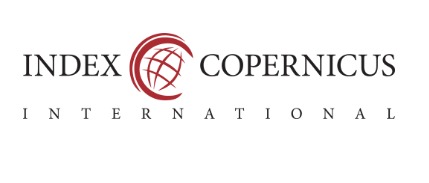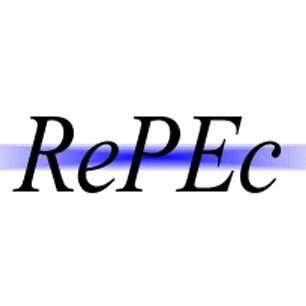- Aim & Scope
- Peer Review Process
- Publication Frequency
- Open Access Policy
- Publication Ethics
- Screening for Plagiarism
- Review Guidelines
- Author Guidelines
- CrossMark Policy
- Misconduct
- Corrections and Retractions
- Appeals and Complaints
Aim & Scope
Journal of Advanced Research in Social Sciences and Humanities (JARSSH) is a reputed international outlet that encourages research based on multidisciplinary and interdisciplinary cross-fertilization of ideas related to humanities and social sciences. JARSSH thrives to support authentic research work, theoretical development, spreading awareness of the fundamental social process, and different innovations introduced from time to time in social sciences and humanities. JARSSH is peer-reviewed and its publication is executed as 04 issues per year. Researchers are welcome to submit novel research ideas and efforts which may help to advance theory, practice, and interdisciplinary approach in social sciences and humanities. JARSSH invites the manuscripts specifically but not limited to the following areas;• Education
• Geography
• History
• Law
• Linguistics and Outline of linguistics
• Psychology & Sociology
• Development Studies
• International Relations
• Political Science
• Comparative religion
• Ethics
• History, criticism and
• Theory of the arts
Peer Review Process
Editorial staff read all the submissions for desk review. The documents that doesn’t comply with the basic criteria are returned without external review. While the manuscript with potential interest are processed for double blind review. Final decision is made by the editor based on reviewer’s suggestions. The final decision has some possibilities; Accepted, need major revisions, require minor revisions, few editorial revisions, or rejected.Review process usually takes three to four months after submission; delays in obtaining reviews may prolong this process. However, we still ensure to reduce the time period and get the reviews as early as possible. Manuscripts are sent out for review electronically, and all correspondence takes place via e-mail.
The Editor in Chief of JARSSH possess the right to decide which manuscripts submitted to the journal should be published.

Review Process
Publication Frequency
JARSSH is peer-reviewed and its publication is executed quaterly (04 issues per year).Open Access Policy
JARSSH provides open access to its content with the aim of making research freely available to readers’ supports global exchange of knowledge and idea. Authors of published articles retain the copyright and grant others the right to use, reproduce, adapt and share their articles according to the Creative Commons Attribution-NonCommercial 4.0 International LicensePublishing Ethics
Publication Ethics and Publication Malpractice Statement
This statement clarifies ethical behavior of all parties involved in the act of publishing an article in Journal of Advanced Research in Social Sciences and Humanities, including the authors, the editors, the peer-reviewers and the publisher. This statement is based on COPE’s Best Practice Guidelines for Journal Editors.JARSSH makes sure to follow the best standards of publication ethics and takes all possible measures against publication malpractices.
At all stages of publication, the ethical responsibilities are seriously identified and undertaken. Generally, the publication ethics include activities such as constantly improving the quality and integrity of the journal, striving to meet the needs of authors and readers, encouraging academic debate, and others. Along with, some specific ethical responsibilities are assigned to editors, authors, and reviewers, as listed below:
Duties of Editors
Fairness in making publication decisionEditor holds a pivotal position in making the publication decision; this decision is solely based on the novelty and importance, of the submitted work, to researchers and readers. The editor may be guided by the policies of the journal's editorial board and constrained by such legal requirements, copyright infringement and plagiarism. The editor may confer with other editors or reviewers in making this decision.
Confidentiality
Editors and support staff are bound to keep the information regarding submitted manuscript confidential. No person other than corresponding author, reviewer, potential reviewer, editorial advisor and the publisher must be able to access the content of the submitted manuscript. The confidentiality of the work which is under review must be ensured.
Disclosure and conflicts of interest
To use or reproduce the unpublished material for own research purposes, prior written consent of authors must be obtained. Editors will not be allowed to use any ideas or information obtained by handling these manuscripts for their own research purpose. If the editor has any conflict of interest (relational, competitive or any other relationship/connection with the organization, institution or author connected with submitted work) with any submitted material, then he/she will excuse her/himself from performing the editorial duties and instead ask a co-editor, associate editor or any other member to perform the duties. Moreover, editors must ensure that all the submitted work clearly mentions the conflict of interest statement.
Peer Review
The editors ensure that all submitted manuscripts being considered for publication undergo peer-review by at least two reviewers who are expert in the field. The manuscript may be rejected at initial phase by the editor provided that the content of manuscript is not novel, lacks originality and/or does not fall under the scope of the journal. The manuscripts suitable for review are then subject to double blind peer-review. Based on the review from two experts’ decision regarding acceptance, acceptance with minor revisions, acceptance with major revisions, o rejection is made by the Editor-in-Chief.
Dealing with unethical practices
The unethical practices can be identified and brought into consideration of the editor and publisher at any time and by any one. The unethical practice will be strictly checked and affirmative actions will be taken to resolve the issue. All the allegations and information provided against the malpractice must be treated seriously and decision is made based on all the provided evidence. However, the authors should be given the opportunity to defend themselves against the allegations.
Duties of Reviewers
Contribution to editorial decisionsThe editors may contribute in editorial decision by providing a genuine feedback on the originality, relevance and importance of the content of submitted work. Reviewers also suggest modifications with an aim of improving their research.
Promptness
The research papers for review are assigned to reviewers based on their expertise and area of interest. However, if the reviewer feels unqualified for reviewing a certain manuscript or that a prompt review would not be possible, then the editor must be notified while excusing himself from the review process.
ConfidentialityStandards of objectivity
Any manuscript submitted for review must be kept confidential and the ideas and information presented in the manuscript must not be shared with anyone, except with Editor-in-Chief or any other entity authorized by editor (if necessary).
Standards of objectivity
The review of the manuscript must be impartial and free from any biases. The review comments must be given with an aim to further the research study and improve the manuscript; personal criticism is not allowed.
Acknowledgement of sources
The reviewer should review the submitted manuscript thoroughly and identify and highlight any misinterpretation of the published work. Also, if any published work has not been cited by the authors then it must be highlighted suitably. All the information in manuscript derived from any published sources must be cited properly.
Disclosure and conflicts of interest
If the reviewer possesses a conflicts of interest with any of the authors, companies or institutions connected to the manuscript and the work described therein should immediately notify the editors to declare their conflicts of interest and decline the invitation to review so that alternative reviewers can be contacted.
Duties of Authors
Reporting standardsAll the work performed by authors must be original and reported correctly. An accurate account of the activities performed, results obtained and conclusions drawn must be provided. Both qualitative and quantitative studies must be objective, comprehensive and offer ample additions to existing body of knowledge. Fraudulent or knowingly inaccurate statements constitute unethical behavior and are unacceptable.
Authorship of the paper
The authorship of the submitted material should be restricted to those who have made a noteworthy input to the idea, design, execution, or interpretation of the research work. Those who supported the execution of the study must be acknowledged in the acknowledgement section. The corresponding author must ensure that all the co-authors are listed appropriately and the final submitted manuscript is approved by all the authors.
Data access and retention
To ensue transparency, authors might be requested to give access to the raw data of their study together with the manuscript for editorial review and if practicable they might be asked to make the data publicly available. In any case, authors should ensure accessibility of such data to other competent professionals. However, authors will retain the copyrights and ownership of the data and it will not be used without their consent.
Originality and plagiarism
The journal accepts and published only original works, hence, authors should ensure that the submitted work is original and if information or data from any other source is reproduces or replicated then it is properly cited. Also, make sure that the submitted material is plagiarism free as plagiarism constitutes unethical publishing behavior and is unacceptable.
Multiple, duplicate, redundant or concurrent submission/publication
The authors must ensure that the submitted manuscript is not submitted elsewhere for processing. Also, the submitted material must not be a mere replication of an existing study as papers describing essentially the same research should not be published in more than one journal or primary publication. However, in some cases the secondary publication is acceptable such as translations, however, the primary source must be cited in the secondary publication.
Conflict of interest statement
A conflict of interest statement must be provided, clearly mentioning the conflicts, if any.
Screening for Plagiarism
The submitted manuscript would be check for plagiarism using by:

Review Guidelines
Responsibility of Peer ReviewerPeer reviewer is responsible for critiquing by reading and evaluating manuscripts in the field of expertise, then giving constructive advice and honest feedback to the author of the article submitted. Peer reviewers, discuss the strengths and weaknesses of the article, how to increase the strength and quality of the paper, and evaluate the relevance and authenticity of the manuscript.
Before reviewing, please note the following:
• Is the article requested to be reviewed in accordance with your expertise?
If you receive a script that covers the topics that are not appropriate areas of your expertise, please notify the editor as soon as possible. Please recommend an alternative reviewer.
• Do you have the time to review this paper?
The review process must be completed within two weeks. If you agree and require a longer period, notify the editor as soon as possible, or suggest an alternative reviewer.
• Is there any potential conflict of interest?
Meanwhile, conflicts of interest will not disqualify you as a reviewer, disclose all conflicts of interest to the editor before reviewing. If you have any questions about potential conflicts of interest, do not hesitate to contact the editorial office.
Review Process
When reviewing the article, please consider the following:
• Title: is it clearly illustrating the article?
• Abstract: does it reflect the contents of the article?
• Introduction: does it describe the accuracy of matters submitted by the author and clearly state the problem being considered? Typically, the introduction should summarize the context of the relevant research, and explain the findings of the research or other findings, if any, offered for discussion. This research should explain the experiments, hypotheses and methods.
Content of the Article
In order to determine the originality and suitability for the journal, are there any elements of plagiarism over 20% of this paper field? Quick literature search can use certain tools such as Scopus to see if there are similarities from other parts.
• If the study had been previously done by other authors, it is still eligible for publication?
• Is the article being fairly new, fairly deep, and interesting to be published?
• Does it contribute to knowledge?
• Does the article adhere to the standards of the journal?
• Scope - Is the article in line with the objectives and scope of the journal?
Method
Comprehensive and perfect
• Does the author accurately describe how the data is collected?
• Is the theoretical basis or reference used appropriate for this study?
• Is the exposure design suitable for the answer to the question?
• Is there a decent enough information for you to imitate the research?
• Does the article identify following procedures?
• Are there any new methods? If there is a new method, does the author explain it in details?
• Is there any appropriate sampling?
• Have the tools and materials used been adequately explained? And
• Does the article exposure describe what type of data is recorded; right in describing the measurement?
Results
This is where the author must explain the findings in his/her research. It should be clearly laid out and in a logical sequence. You will need to consider whether the appropriate analysis has been carried out; the use of statistical tools? If you have a better statistical tools to be used in this study, notify it, and the interpretation need not to be included in this section.
Discussion and Conclusion
• Are the claims in this section is supported by the fair results and quite reasonable?
• Does the author compare the research results with other previous ones?
• Do the results of research written in the article contradict the previous theories?
• Does the conclusion explain how a better scientific research to be followed-up?
Tables and Pictures
Is it suitable with the referred explanation by showing data which is easy to interpret and understandable for the readers?
Writing Styles
• Authors must be critical mostly to the literature systematic review of the issues, which is relevant to the field of study.
• Reviews should be focused on a single topic.
• All exposure should be in English and written in a god and coherent grammar.
• Easy to understand
• Interesting to read
Reference
• First Person (Interview)
• Book Reviews
• Insight Technology (Product Review)
Final Review
• All results of the review submitted by reviewers are confidential
• If you want to discuss the article with a colleague, kindly inform the editor
• Do not contact the author directly.
• Ethical issues:
i. Plagiarism: if you suspect the article is mostly plagiarism from other authors, please let the editor knows the details
ii. Fraud: It is very difficult to detect a fraud category, but if you suspect the results in the article is not true, please inform the editor
Complete "The Review" by the due date to the editorial office. Your recommendation for the article will be considered when the editor makes a final decision and your honest feedback is highly appreciated.
When you write a comment, please show the part of the comment that is only intended for the editor and parts that can be returned to the author.
Please do not hesitate to contact the editorial office with any questions or problems that you may encounter.
CrossMark Policy
Applying the CrossMark icon is a commitment by Journal of Advanced Research in Social Sciences and Humanities (JARSSH) to maintain the content published and alert readers to changes if and when they occur.
What is Crossmark?
CrossMark, a multi-publisher initiative from CrossRef, provides a standard way for readers to locate the authoritative version of a document. JARSSH recognizes the importance of the integrity and completeness of the scholarly record to researchers and librarians and attaches the highest importance to maintaining trust in the authority of its electronic archive. Clicking on the CrossMark icon will inform the reader of the current status of a document and may also provide additional publication record information about the document.
Misconduct
JARSSH takes all allegations against potential misconduct seriously, and due course of action is taken to cater to such allegations. The Editor is responsible for deciding on potential misconduct by including the concerned authorities, authors, or institutions involved.
Research Misconduct
All the research work must be carried out by following ethical guidelines; specifically, research involving human or animal subjects should strictly adhere to the institutional ethical guidelines. The participants must be informed about the scope of the research, and if required, their consent must be taken to disclose their responses and information for research purposes. Similarly, the organizations or institutions involved must also be informed about the use of data for research purposes. If the basic ethical guidelines are violated, then the manuscript may be rejected. Suppose a published article is found incompatible with the ethical research guidelines. In that case, the manuscript will be retracted, and also third parties such as authors’ institutions or funding agencies would be informed.
Data Falsification and Fabrication
Authors must report the correct findings and results based on data. Data tampering, falsification, misinterpretation, or misconstruction of the results falls under violation of ethical guidelines, and thus, if data falsification or fabrication is witnessed, then the manuscript will be rejected or retracted (in case of the published article).
If a suspicion regarding falsification or fabrication of data and results arises during the peer-review process, then the Editor is informed. The Editor may ask for the data for verification. Failure to provide the data would lead to the rejection of the manuscript. Along with the authors’ institutions and other concerned funding, bodies would be notified.
Plagiarism
To ensure originality of research work, the manuscripts having plagiarism above the tolerable levels are not considered for the review. Once the manuscript is submitted, it is checked for plagiarism; if it is found substantially plagiarized, it is rejected or returned to authors for further work.
Corrections and Retractions
If any correction is required for an article, then the corrected article is published while the original article still remains in the public domain. However, in some instances, the original article may be removed.
Correction
In case of changes in a manuscript that alters the published article's interpretation or conclusion, the corrected article will be published such that the corrected article is indexed and bi-directionally linked to the original article.
Retraction
In some cases, the changes might significantly challenge the interpretation or conclusion of an article. In such cases, the published article is retracted, and the published articles are watermarked as retracted articles; also, the title is modified with the prefix “Retracted Article.”
Removal of a published article
JARSSH reserves the right to remove any published article from its online platforms. This removal can be carried out in case of government orders, violation of intellectual property rights, legal rights or privacy rights. In any case, the authors’ and concerned institutions and organizations will be notified about the removal and the corresponding reasons.
Appeals and Complaints
Appeals
Authors may appeal against the rejection of the manuscript. For this purpose, a formal letter of appeal must be sent to the editorial office via email. The Editor may decide to process the appeal or reject it depending upon the arguments presented. An appeal is considered worthy of processing only if;
- Authors can highlight a significant error in the review process
- Authors can provide important supplementary data
- Authors may prove that the review process lacks impartiality or objectivity
If the Editor deems the appeal successful, then the revised article again undergoes a peer-review process. Also, the author is notified about the further course of action.
Complaints
Complaints regarding the publication procedure, publication ethics, or policies can be sent via the editorial office. The Editor is responsible for handling such complaints first hand. In case of grievances against the review process, review timeline, quality of the review, or publication ethics, the Editor is responsible for responding to the complaints and taking necessary actions to resolve the issue. The feedback is also shared with the editorial team and reviewers to improve the review process in the future.












.png)










